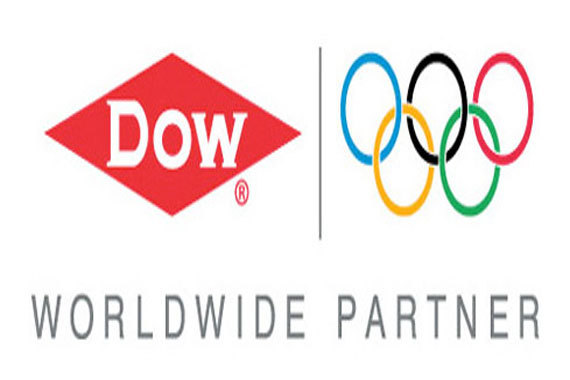More news
- Asian paint regulatory round up – Indonesian exterior paint still uses lead, warns W...
- Nigeria’s paint industry navigates regulatory changes and economic challenges amid p...
- Focus on the global coatings market: Global coatings market outlook
- Ask Joe Powder – October 2024
- Chinese paint majors look to domestic consumer sales as commercial real estate slumps

Nine of the retrofit structures at the Olympic Games Tokyo 2020 will be outfitted with building solutions powered by Dow technology designed to seal, protect and enhance building performance.
Behind the scenes of the Olympic Games Tokyo 2020, Dow’s materials science expertise helps power infrastructure technologies that insulate, seal, connect, coat, protect and deliver a sustainable legacy. More than half of the 43 Olympic venues are existing facilities, resulting in an estimated savings of 80,000t of CO2 equivalent emissions[1]. Among the existing buildings, nine of those that are retrofitted deployed various Dow technologies to help elevate the performance and aesthetic of facades, building envelopes and electrical systems.
"To ensure retrofit facilities at Tokyo 2020 have the necessary performance level expected of a modern Olympic Games, the Tokyo Organizing Committee of the Olympic & Paralympic Games leveraged Dow’s materials science expertise,” said Mike Reed, Vice President of Dow Sports Marketing Solutions. "The average lifespan of a building is 50 years, namely due to inevitable damage and wearing of the structure’s skin or envelope. By working with our local customers to deploy Dow’s innovative technologies to these buildings, we’re able to help conserve and enhance existing structures, delivering sustainability gains long after the closing ceremonies.”
The Olympic Games venues represent the proud heritage of Japan, the legacy of the Olympic Games Tokyo 1964 and the bright future of Tokyo’s urban development. Although the Olympics Games, still to be called Tokyo 2020, have been postponed to July 2021, the focus on constructing an unparalleled Olympic experience for both fans and athletes continues[2]. Featuring a total of 43 venues – including eight new permanent structures, 25 existing venues and 10 temporary sites – retrofit venues at Tokyo 2020 honour their history and are reimagined to serve the city and its residents for the next decade and beyond. Dow technologies are used in the following repurposed buildings:
- Olympic Stadium
- Olympic Village
- Equestrian Park
- Saitama Super Arena
- Kasai Canoe Slalom Centre
- Sea Forest Waterway
- Sea Forest Cross Country Course
- Nippon Budokan
- International Broadcast Centre and Main Press Centre
Nippon Budokan is one of three major venues originally built for the Olympic Games in 1964 that has been upgraded for Tokyo 2020. Known as the spiritual home of Japanese martial arts, structural protection of this important site is key. DOWANOL™ Glycol Ethers used in the water-based coatings system helps reduce damage from moisture, cracking and popping to keep the venue looking fresh. ELASTENE™ Elastomeric Wall Coatings help shield the exterior walls by providing excellent dirt and water resistance, while paint formulated with PRIMAL™ Acrylic Polymer is used to help protect the integrity of interior walls.
"Transitioning to a sustainable future is a business imperative for Dow, and as a materials science company, we have both the opportunity and responsibility to promote adoption of more efficient technologies,” said Dr Hirokazu Shibata, Technology & Sustainability Leader for Dow Sports Marketing Solutions. "It’s no secret that the construction industry is one of world’s largest consumers of both energy and resources,[3] and the decisions made today for the built environment will play a major role in the future of the industry. With technology solutions that exist today, like those incorporated throughout Tokyo’s retrofitted venues, we can improve the energy efficiency of structures, reduce embodied carbon and help leave a positive legacy backed by the power of sport and science.”
Of the 39% of carbon emissions that result from building and construction, 11 percent comes specifically from embodied carbon – or carbon associated with the upfront materials and construction processes throughout the whole building lifecycle. As such, retrofit of existing structures results in significant embodied energy savings when compared with new construction[4].
Another retrofit example at Tokyo 2020 is the International Broadcast Center/Main Press Center which needed to be re-glazed both to enhance aesthetics and stabilise the structure. DOWSIL™ SE 797 Silicone Sealant is leveraged in the canopy/connecting corridor that links the International Broadcast Center with the Main Press Center, giving the glass façade a sleek look without metal frames. The silicone sealant has excellent adhesion and weather protection and also helps absorb and relieve movement between the structure’s elements to prevent cracks that could result from Tokyo’s hot summer temperatures.
Dow solutions are also incorporated across several newly built Tokyo 2020 venues, including the Ariake Arena, Ariake Gymnastics Centre, Tokyo Aquatics Centre and many more.
For more information about Dow’s collaboration with the Olympic Movement, visit https://www.dow.com/en-us/sports/partnerships/olympics.
References:
[1]https://tokyo2020.org/en/games/sustainability/tokyo-2020-announces-sus-plan-and-guiding-principle
[2]https://www.olympic.org/news/ioc-ipc-tokyo-2020-organising-committee-and-tokyo-metropolitan-government-announce-new-dates-for-the-olympic-and-paralympic-games-tokyo-2020
[3]https://www.architectsjournal.co.uk/news/introducing-retrofirst-a-new-aj-campaign-championing-reuse-in-the-built-environment/10044359.article
[4]https://www.worldgbc.org/news-media/WorldGBC-embodied-carbon-report-published#_ftn1



